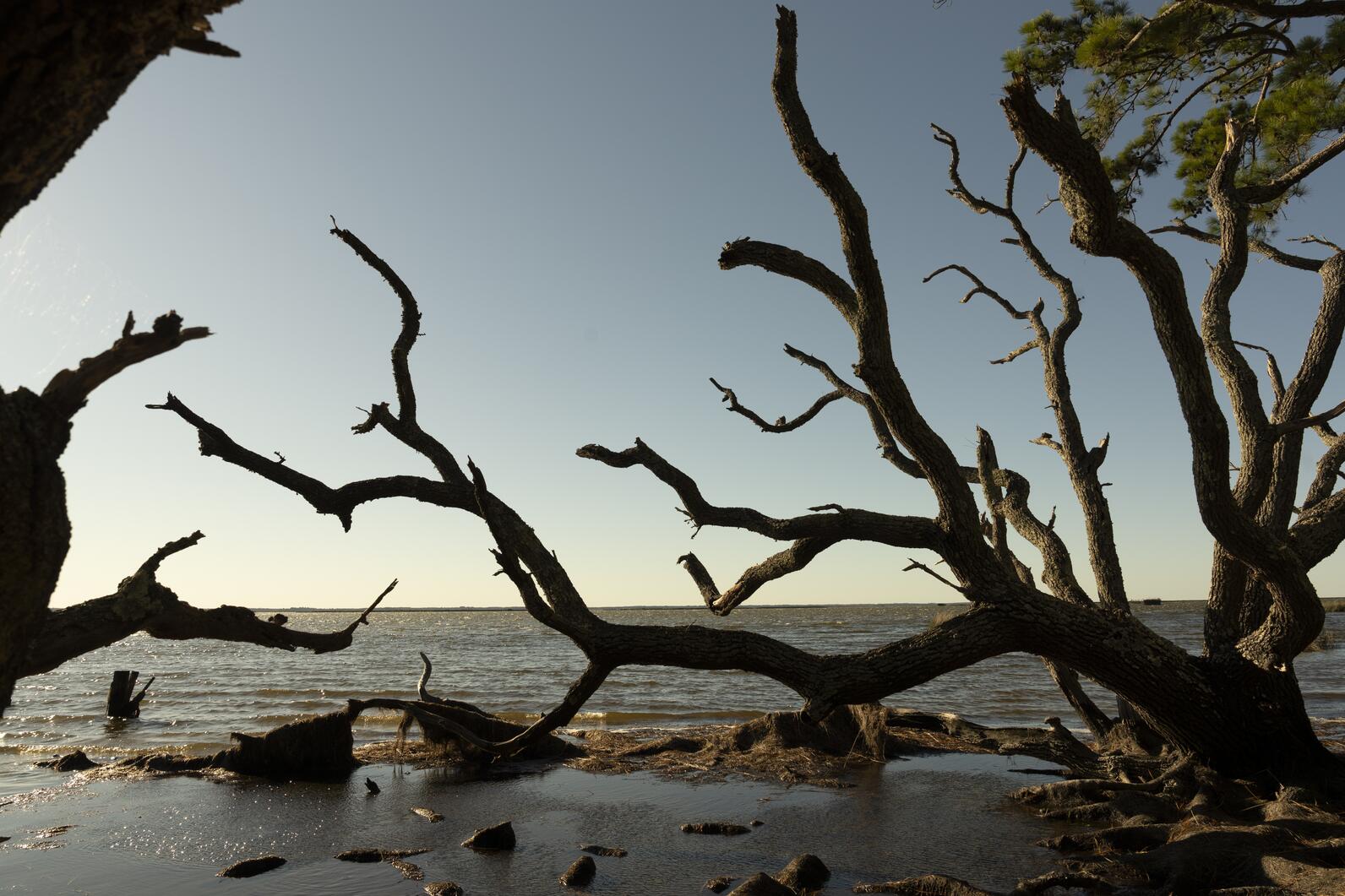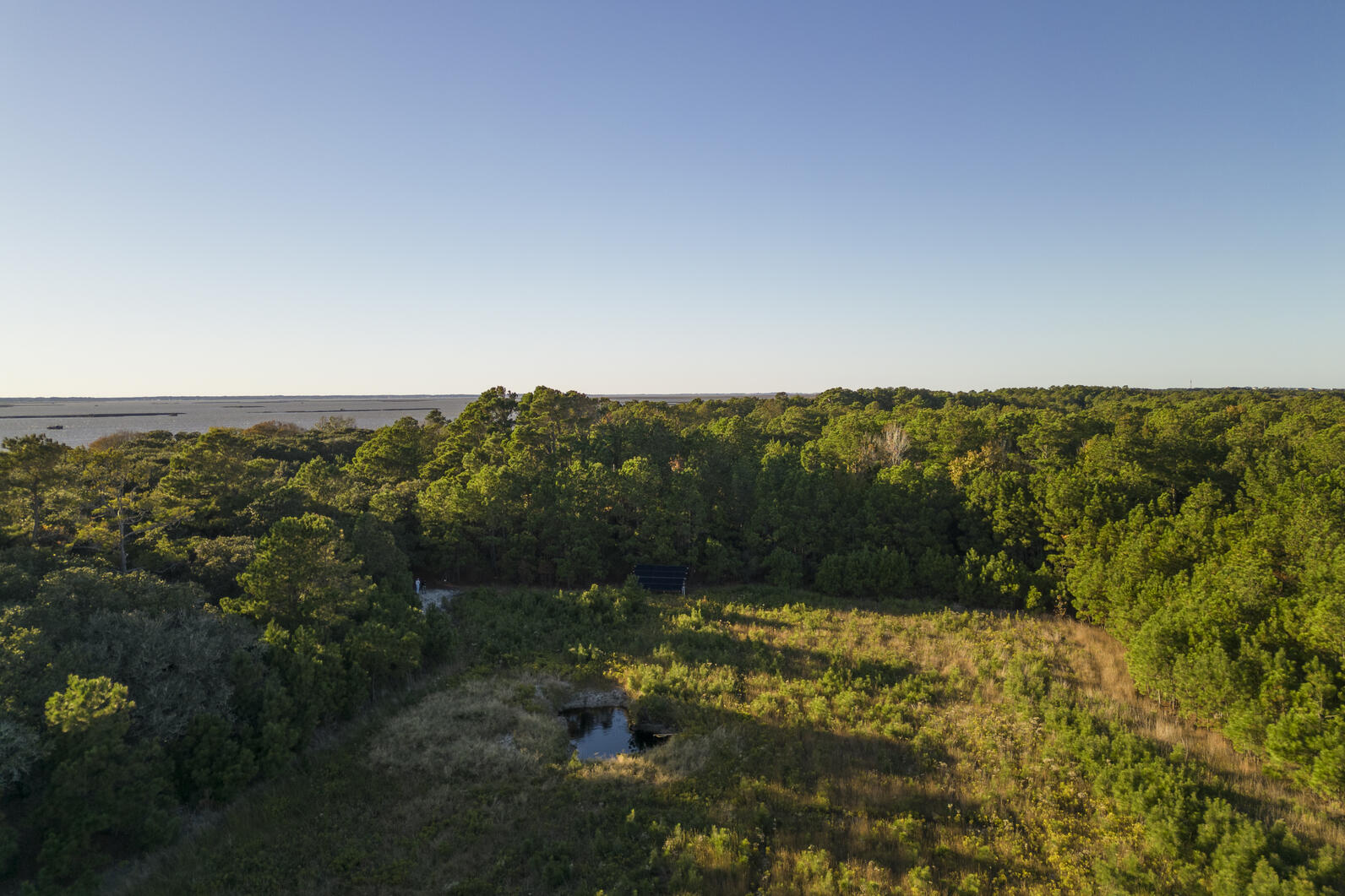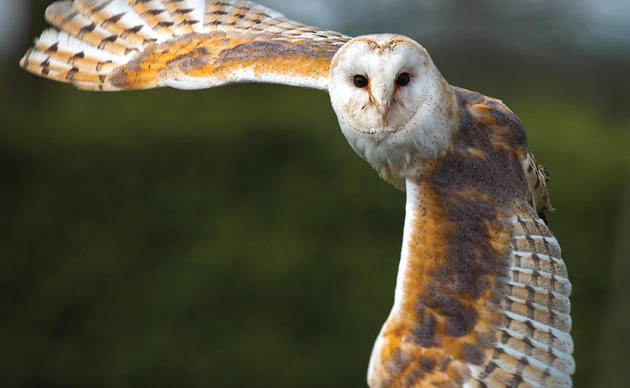This year at Audubon's Pine Island Sanctuary on the Outer Banks, construction filled the air along with the sounds of Purple Martins, growing Osprey chicks, and wintering ducks. We also conducted wildlife surveys, welcomed nesting birds, tracked box turtles, and made significant progress on several marsh and field restoration projects.
One of our biggest highlights was the restoration of an old impoundment and waterway system at the heart of the sanctuary, supported by the NC Land and Water Trust Fund. The refreshed pond has already attracted the attention of birds, with a Great Egret, Spotted Sandpiper, and family of Wood Ducks being among its first visitors.
These initiatives aim to keep the sanctuary as productive as it was 100 years ago while ensuring it remains prepared and well-positioned for the rapidly changing future of North Carolina’s coast.
Read on for a full recap of what we’ve been up to across Pine Island’s 2,600 acres of marsh and upland maritime forest.
Infrastructure and Research
After a full summer of construction closures, we welcomed back eager students from UNC's Coastal Studies Institute in September to stay at the historic hunting lodge. Our sanctuary offers students a unique opportunity to get hands-on research experience with untouched coastal habitats that are rapidly dwindling across our coast.
“We loved having students return after a long summer of construction,” said Center Director Robbie Fearn. “We’re grateful for this partnership because their work gives us valuable information that we can use to better manage the sanctuary.”
The closure was much needed, however, as it allowed us to complete the impoundment restoration project and also undertake important safety upgrades at the sanctuary. This included putting in a new water main, fire hydrants, and emergency vehicle access.

Marsh Restoration Moving to the Next Phase
We have good news to share about our ongoing marsh restoration pilot projects: two shoreline stabilization projects have received the required permits to move to the next phase: coir logs and Christmas tree buffers. Check out this article to learn more about how the pilot projects will look. The design phase of the project was funded by the National Fish and Wildlife Foundation.
Now that plans have been created and permits acquired, we can develop a contract for the work and start pre-implementation monitoring of the marsh vegetation and elevation. We have already surveyed the area for secretive marsh birds for several years. Monitoring before the projects are installed will give us a baseline from which to measure their success. We’ve partnered with the UNC Drone Lab to do this analysis.
By February we hope to start implementation. If you’re local, there is a way for you to get involved: we need your old Christmas trees. We’ll have an open trailer at the Duck Town Park from December 26 to January 15 for used tree donations.
Nesting
During the nesting season, Pine Island is home to a diverse array of birds, from secretive marsh species to birds that thrive in shrubby, weedy habitat to common backyard species. Here is an incomplete list of the species we observed nesting this year:
- 19 Tree Swallow nests
- 9 Purple Martin nests
- 6 Eastern Bluebird nests
- 1 Carolina Wren nest
- 1 Carolina Chickadee nest
- 1 Tufted Titmouse nest
- 1 Least Bittern nest
- Prothonotary Warbler nests
- 1 Osprey nest
We also had Prothonotary Warbler nests, which a graduate student at Elizabeth City State University monitored during the summer. Out of all the birds we monitored, there were 58 total fledglings that were able to leave the nest and fly. This monitoring was done by a group of very dedicated volunteers. We’re grateful to our dedicated group of bird volunteers for all of their work this summer.

Tracking Box Turtles
We continued our effort to track box turtles—a species that can help inform our management of birds and other wildlife on the sanctuary. Eastern Box Turtles are a vulnerable species in North Carolina and can tell us a lot about the health of the habitats in which they reside. Two turtles currently have transmitters, KOW, and HIJ.
“KOW is an extremely photogenic female Box Turtle who loves to roam around the sanctuary,” said Senior Coordinator of Habitats and Facilities Sara Marschhauser. “She spends time trudging around old dunes in the live oak forest, looking for food or hiding in briars. Her interactions with the land surrounding the lodge have told us a lot about its importance for smaller critters.”
Habitat and Tracking Updates
Our work to rehabilitate an overgrown field and create the perfect breeding habitat for Black Rail continues. We’re still working to improve our water pump system and install an automated recording unit that will monitor species in the restored habitat, which will be managed to provide just the right amount of water for Black Rails, a threatened and fast-declining marsh bird species.
Another highlight from the year was installing the sanctuary’s first Motus tower. This tower is part of a global network that detects birds outfitted with data transmitters. Because of Pine Island’s position on the northern Outer Banks and in the heart of the Atlantic Flyway, we’re hopeful that bird detections at the sanctuary will contribute meaningful data to various bird tracking projects.
Already, the station has picked up a Piping Plover and a Short-billed Dowitcher. Learn more about Audubon’s effort to grow this wildlife tracking initiative.
We also have a field intern from the Coastal Studies Institute joining us this fall to develop management plans for our historic dove hunting fields. Part of the project will be converting a young pine field into a wildflower meadow, which will benefit birds and pollinators by increasing the biodiversity of the site.

Ways to Visit Pine Island
Even though the sanctuary is closed to the public, there is a 4-mile out-and-back nature path behind the Pine Island Racquet and Fitness Club where visitors can enjoy the maritime forest, Currituck Sound marshes, wildlife and amazing bird-watching platforms.
Throughout the long summer of construction, the center has continued its long-standing partnership with Coastal Kayak Touring to offer kayaking trips of the sound during the spring and summer. These trips offer the public a unique view of our sanctuary and the extensive freshwater marshes of the Currituck Sound. Learn more about the trips here.







